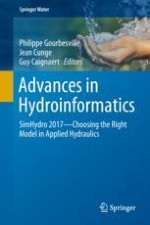2018 | OriginalPaper | Buchkapitel
Artificial Viscosity Technique: A Riemann-Solver-Free Method for 2D Urban Flood Modelling on Complex Topography
verfasst von : Bobby Minola Ginting, Ralf-Peter Mundani
Erschienen in: Advances in Hydroinformatics
Verlag: Springer Singapore
Aktivieren Sie unsere intelligente Suche, um passende Fachinhalte oder Patente zu finden.
Wählen Sie Textabschnitte aus um mit Künstlicher Intelligenz passenden Patente zu finden. powered by
Markieren Sie Textabschnitte, um KI-gestützt weitere passende Inhalte zu finden. powered by
